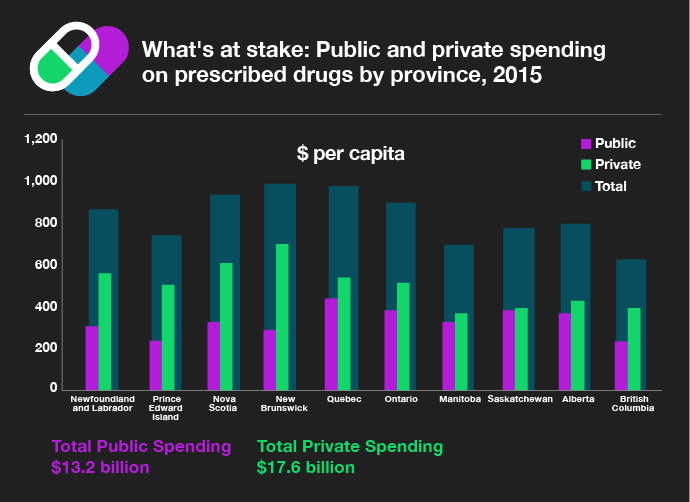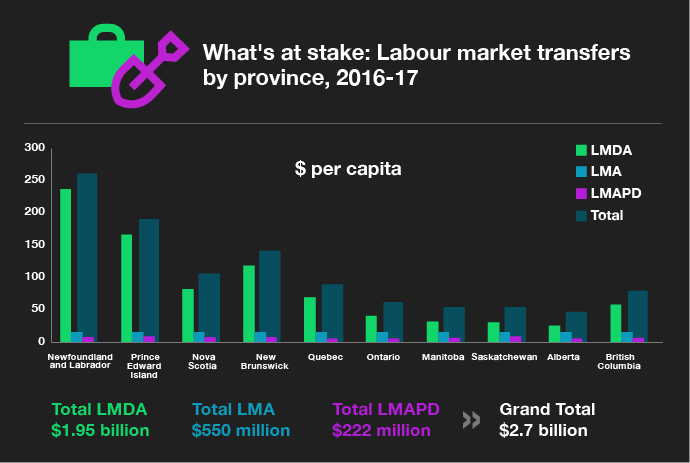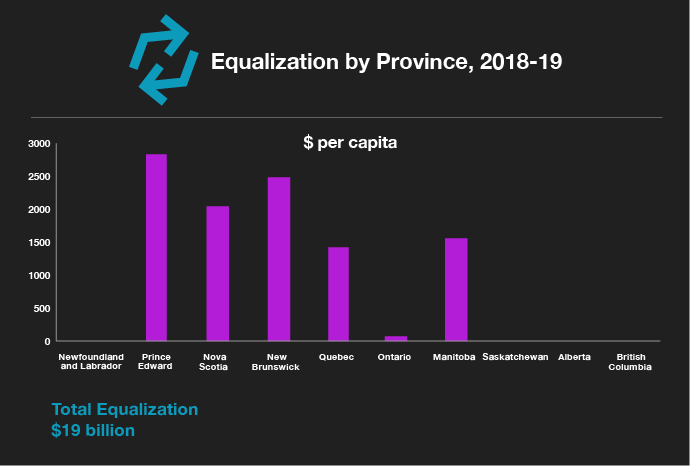March 15, 2018
The 2018 federal budget contained many positives. Action on gender inequality and the gender wage gap, on research underfunding, and on many other items was long in coming.
Three areas in particular that merit attention are national pharmacare, the skills lab, and Equalization.
Pharmacare
The budget announced a new Advisory Council on the Implementation of National Pharmacare. It is likely that the Council will need to balance expectations for a universal single-payer plan and direction to be fiscally responsible. Beyond that, it is yet unclear precisely what its mandate will be, and as such, what types of recommendations it might develop.
What is clear is that collaboration with provinces and territories – the governments that are currently responsible for administering Canada’s pharmacare programs – will be vital. And this means raising the bar on collaboration much higher than where it has been on health care more broadly.
Health care was originally meant to be a federal-provincial partnership. But over time provinces have been left holding the bag by a series of federal governments largely indifferent to the costs of funding the health care system. Let’s hope that on the pharmacare front we can do better.
Source: National Health Expenditure Database, Canadian Institute for Health Information
Skills Lab
The 2018 budget also confirmed that the Skills Lab, originally announced in the 2017 budget, will launch this spring. The Lab is meant to advise on emerging skills and workforce trends, and serve as a research hub focused on developing, testing and rigorously measuring new approaches to skills assessment and development.
It’s a worthwhile idea, but the catch is that most training programs are the purview of provincial and territorial governments. It is likely that a Skills Lab that is one-sidedly designed and managed by the federal government (even if placed at operational arm’s length from its sponsoring federal department) risks being ineffective.
So governance will be an important if potentially annoying detail to get right. The Mowat Centre proposed a model by which federal, provincial and territorial governments would co-create the Lab. There is still an opportunity to commit to this end and ensure the Skills Lab lives up to its promise.
Whatever governance model is chosen, the folks running the Lab will need to be innovative, not only with respect to skills program design, but also in intergovernmental relations. To achieve the Lab’s ambitious mandate, the organization’s practices will need the following characteristics:
- It must be meaningfully collaborative to ensure its advice is complete.
- It must be deeply connected both to the sector and decision-makers to ensure its work and advice is relevant.
- It will need buy-in from provinces to ensure its advice is seen as legitimate and is ultimately taken by those running the programs.
Sources: LMDA: Employment Insurance Monitoring and Assessment Report for the fiscal year beginning April 1, 2015 and ending March 31, 2016; LMA and LMAPD: Federal Public Accounts 2016-17, Volume III, Section 6—Transfer payments.
Equalization
Lastly, Equalization. Equalization scarcely receives a mention in the budget, but the tables at the back indicate that the program is expected to continue to grow in line with GDP for the foreseeable future (as first noted by University of Calgary’s Trevor Tombe).
There is no indication as to whether this simply represents prudent fiscal planning or a signal that the current ‘fixed envelope’ approach will persist. This approach – which sets a ceiling on total expenditures under the program – has been used to save the federal government money for almost a decade. But this year, this floor on payments became a ceiling. Consequently, the fixed envelope formula spat out $1.8 billion more than the program otherwise would have required, which has correctly drawn criticism for ‘over-equalization’.
Allowing this to happen once for the sake of predictability for provinces is justifiable. Provinces that rely on Equalization should expect that funding will be allocated according to the method described in legislation. But over-equalizing in perpetuity will not be sustainable either fiscally or politically.
Happily, the program is currently up for its scheduled five-year renewal. However, the federal government has not indicated (publicly) what a renewed program might look like. This represents a perfect opportunity to discuss important changes to the program that should include:
- A return to a more principled determination of the program’s funding envelope.
- Addressing shortcomings with respect to predictability.
- Incorporating a measure of expenditure need into the allocation of payments.
A meaningful discussion on a principled way forward for Equalization, with the provinces at the table, needs to take place before any changes are made to the program.
Source: Finance Canada. Note: Lagged and weighted population data are used to be consistent with the Equalization formula calculations.
The common theme across these three developments is that Canada’s governments will have to collaborate to ensure their success. This may be more difficult than usual in the coming months, with Alberta and British Columbia not on the best of terms and with Ontario and Quebec focused on upcoming elections. Providing strong impetus to keep Canada’s governments talking to each other could prove one of budget 2018’s biggest opportunities to move Canada forward.
Author
Sunil Johal
Release Date
Mar 15, 2018










